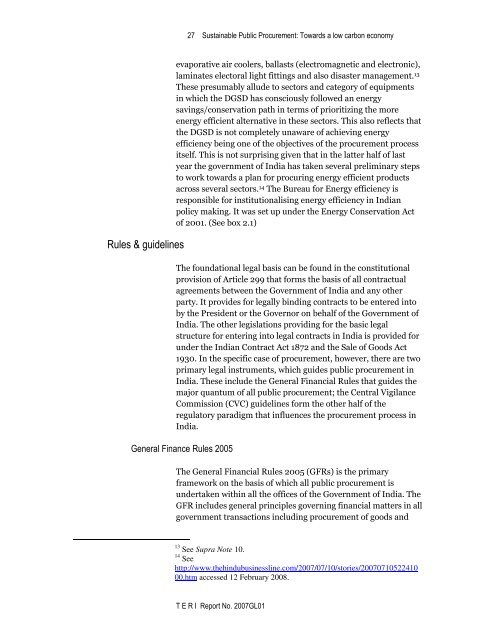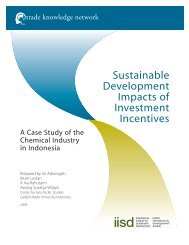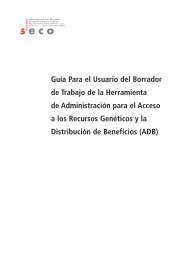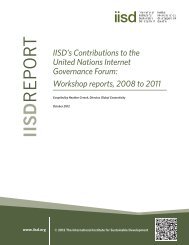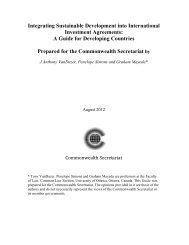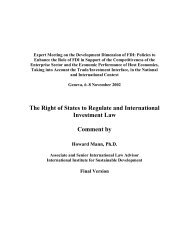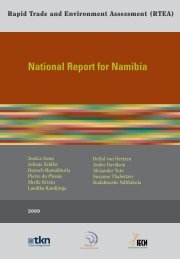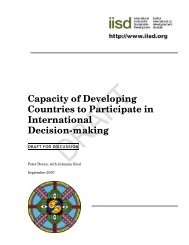Sustainable Public Procurement: Towards a lowâcarbon economy
Sustainable Public Procurement: Towards a lowâcarbon economy
Sustainable Public Procurement: Towards a lowâcarbon economy
You also want an ePaper? Increase the reach of your titles
YUMPU automatically turns print PDFs into web optimized ePapers that Google loves.
27 <strong>Sustainable</strong> <strong>Public</strong> <strong>Procurement</strong>: <strong>Towards</strong> a low carbon <strong>economy</strong><br />
Rules & guidelines<br />
evaporative air coolers, ballasts (electromagnetic and electronic),<br />
laminates electoral light fittings and also disaster management. 13<br />
These presumably allude to sectors and category of equipments<br />
in which the DGSD has consciously followed an energy<br />
savings/conservation path in terms of prioritizing the more<br />
energy efficient alternative in these sectors. This also reflects that<br />
the DGSD is not completely unaware of achieving energy<br />
efficiency being one of the objectives of the procurement process<br />
itself. This is not surprising given that in the latter half of last<br />
year the government of India has taken several preliminary steps<br />
to work towards a plan for procuring energy efficient products<br />
across several sectors. 14 The Bureau for Energy efficiency is<br />
responsible for institutionalising energy efficiency in Indian<br />
policy making. It was set up under the Energy Conservation Act<br />
of 2001. (See box 2.1)<br />
The foundational legal basis can be found in the constitutional<br />
provision of Article 299 that forms the basis of all contractual<br />
agreements between the Government of India and any other<br />
party. It provides for legally binding contracts to be entered into<br />
by the President or the Governor on behalf of the Government of<br />
India. The other legislations providing for the basic legal<br />
structure for entering into legal contracts in India is provided for<br />
under the Indian Contract Act 1872 and the Sale of Goods Act<br />
1930. In the specific case of procurement, however, there are two<br />
primary legal instruments, which guides public procurement in<br />
India. These include the General Financial Rules that guides the<br />
major quantum of all public procurement; the Central Vigilance<br />
Commission (CVC) guidelines form the other half of the<br />
regulatory paradigm that influences the procurement process in<br />
India.<br />
General Finance Rules 2005<br />
The General Financial Rules 2005 (GFRs) is the primary<br />
framework on the basis of which all public procurement is<br />
undertaken within all the offices of the Government of India. The<br />
GFR includes general principles governing financial matters in all<br />
government transactions including procurement of goods and<br />
13 See Supra Note 10.<br />
14 See<br />
http://www.thehindubusinessline.com/2007/07/10/stories/20070710522410<br />
00.htm accessed 12 February 2008.<br />
T E R I Report No. 2007GL01


